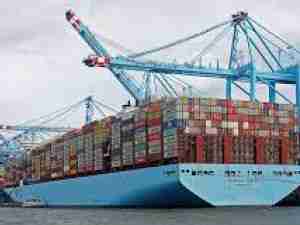Early indications suggest ocean freight shipping rates are set to increase further in early February amid the ongoing Red Sea crisis, according to data released by Xeneta today, Tuesday.
The Xeneta ocean freight rate benchmarking platform calls upon more than 400 million crowdsourced data points and the latest projection is based on rates already received from customers for the first week in February. While the situation remains volatile and subject to change, the newly-released data is the best indication of where the market is headed.
From the Far East to Mediterranean, market average short term rates are set to increase 11% by 2 February to stand at USD 6507 per FEU. This is an increase of 243% since the Red Sea crisis escalated in mid December.
Rates from the Far East to North Europe are set to rise by 8% by 2 February, with a market average of USD 5106 per FEU. This is an increase of 235% since mid December.
The biggest increase in rates is from the Far East into US East Coast. On this trade, the newly-released data suggests an increase of 17% by 2 February to bring the average short term rate up to USD 6119 per FEU. This is an increase of 146% since mid December.
Peter Sand, Xeneta Chief Analyst, said: “Carriers are trying to readjust services to make up for the additional sailing time around the Cape of Good Hope. For example, they are cutting journeys short, missing port calls and increasing sailing speed.
“However, despite this, the early data from Xeneta suggests rates will continue to rise as we head into February.”
While the market is set to rise further, there are early signs of factors which could see rates begin to fall again following the Lunar New Year peak.
Sand said: “The Red Sea crisis is causing a capacity issue rather than a demand issue, as we saw during the pandemic. It is the massive uncertainty in the market which has brought imbalance and instability. During times like this you can only keep your cool if you are well informed.
“We are hearing from Xeneta customers that carriers are now no longer offering the most expensive premium services which guarantee freight will be shipped during periods of extreme pressure on available capacity.
“This may suggest there is a waning demand for this level of service because the urgency is fading from the shipper side, or perhaps it is because capacity is available after all, despite the chaos caused by carriers pausing transits through the Suez Canal.”










